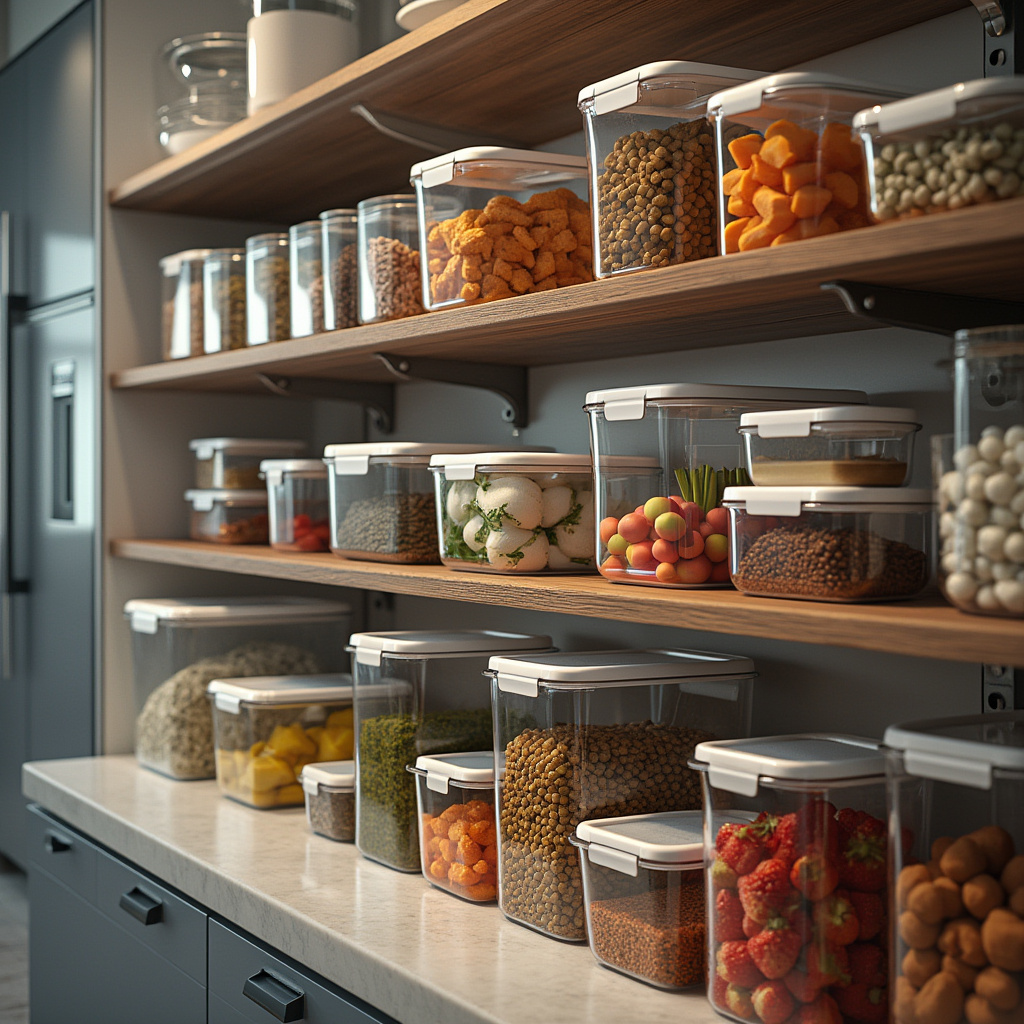When it comes to organizing your kitchen, proper food storage and freezer containers are essential. Not only do they help keep your food fresh, but they also maximize space and efficiency in your refrigerator and freezer.
Food storage containers are a simple yet effective way to transform your kitchen into a more organized and functional space. By choosing the right containers, you can ensure your food stays fresh longer, reduce waste, and make meal prep easier. Whether you’re storing leftovers, freezing meals, or keeping snacks fresh, the right containers can make all the difference.
There are several types of food storage containers to choose from, each with its own unique benefits. Plastic containers are lightweight, affordable, and available in various sizes. Glass containers are durable, non-porous, and resistant to stains and odors. Stainless steel containers are ideal for long-term storage, as they don’t absorb flavors or odors. Silicone containers, on the other hand, are flexible and collapsible, making them great for space-saving storage.
When selecting food storage containers, consider factors like size, shape, and material. Look for containers with airtight seals to prevent spills and keep food fresh. Durability is also important, as high-quality containers can withstand frequent use and washing. By investing in the right containers, you can create a more organized, efficient, and food-safe kitchen environment.
Organizing Your Kitchen with Food Storage Containers
To maximize efficiency in your kitchen, consider implementing a few simple organizational strategies. Start by using clear containers, which allow you to easily see the contents without having to open each one. This not only saves time but also helps reduce confusion when searching for specific items.
Labeling is another crucial step in maintaining an organized kitchen. Use labels to mark the contents of each container and include expiration dates if applicable. This practice ensures that you can quickly identify what you have and helps prevent food from going to waste. Additionally, implementing a first-in, first-out system can make a significant difference. By placing newer items behind older ones, you ensure that nothing sits in the back of the fridge or freezer for too long.
Grouping similar items together is another effective organizational technique. For example, you can dedicate one section of your refrigerator to snacks, another to leftovers, and another to meal prep. This approach makes it easier to find what you need when you need it, streamlining your cooking and meal preparation process.
Freezer Storage Tips
When it comes to freezer storage, there are several tips to keep in mind to maintain food quality and safety. First, always use freezer-safe containers that can withstand low temperatures without cracking or becoming brittle. This ensures that your containers remain durable and reliable over time.
Another important tip is to leave headspace in your containers. Liquids expand when frozen, so failing to leave enough room can cause containers to crack or lids to burst open. Additionally, it’s best to cool food before freezing it. This helps maintain the quality of the food and prevents the formation of ice crystals, which can affect texture and flavor.
Portioning foods before freezing is also a smart strategy. By freezing items in meal-sized portions, you can easily thaw and use only what you need, reducing waste and saving time. This method is particularly useful for meats, soups, and prepared meals.
By implementing these strategies and investing in quality food storage and freezer containers, you can create a more organized, efficient, and food-safe kitchen environment.
Conclusion
Investing in high-quality food storage and freezer containers is a simple yet impactful way to transform your kitchen into a more organized, efficient, and food-safe space. By selecting the right containers for your needs and implementing smart organizational strategies, you can keep your food fresh longer, reduce waste, and make meal prep a breeze. Whether you’re storing leftovers, freezing meals, or keeping snacks fresh, the right containers and practices will help you maximize your kitchen’s potential.
Frequently Asked Questions
1. Why are airtight containers important for food storage?
Airtight containers are essential because they prevent spills, keep food fresh by locking in flavors, and protect against moisture and contaminants. This helps maintain food quality and reduces waste.
2. How do I prevent freezer burn when using freezer containers?
To prevent freezer burn, ensure food is cooled before freezing, remove as much air as possible from containers, and use freezer-safe containers. Portioning food into smaller containers also helps.
3. What is the best material for food storage containers?
The best material depends on your needs. Plastic is lightweight and affordable, glass is durable and non-porous, stainless steel is ideal for long-term storage, and silicone is flexible and space-saving.
4. Should I label my food storage containers?
Yes, labeling your containers is highly recommended. It helps you quickly identify contents, track expiration dates, and ensure a first-in, first-out system to reduce food waste.
5. Can I use any container for freezer storage?
No, not all containers are suitable for freezer storage. Always use freezer-safe containers that can withstand low temperatures without cracking or becoming brittle.

Leave a Reply